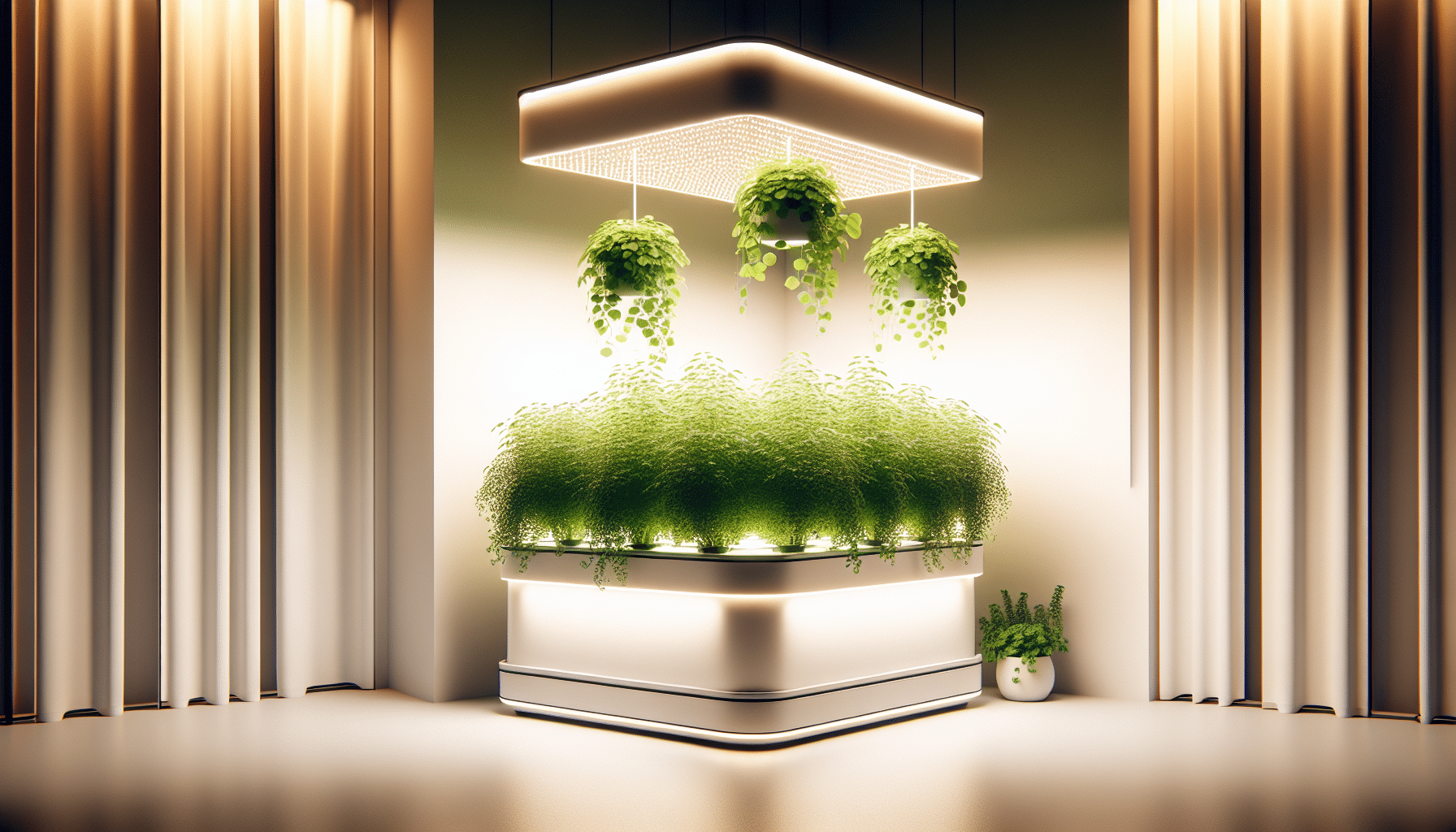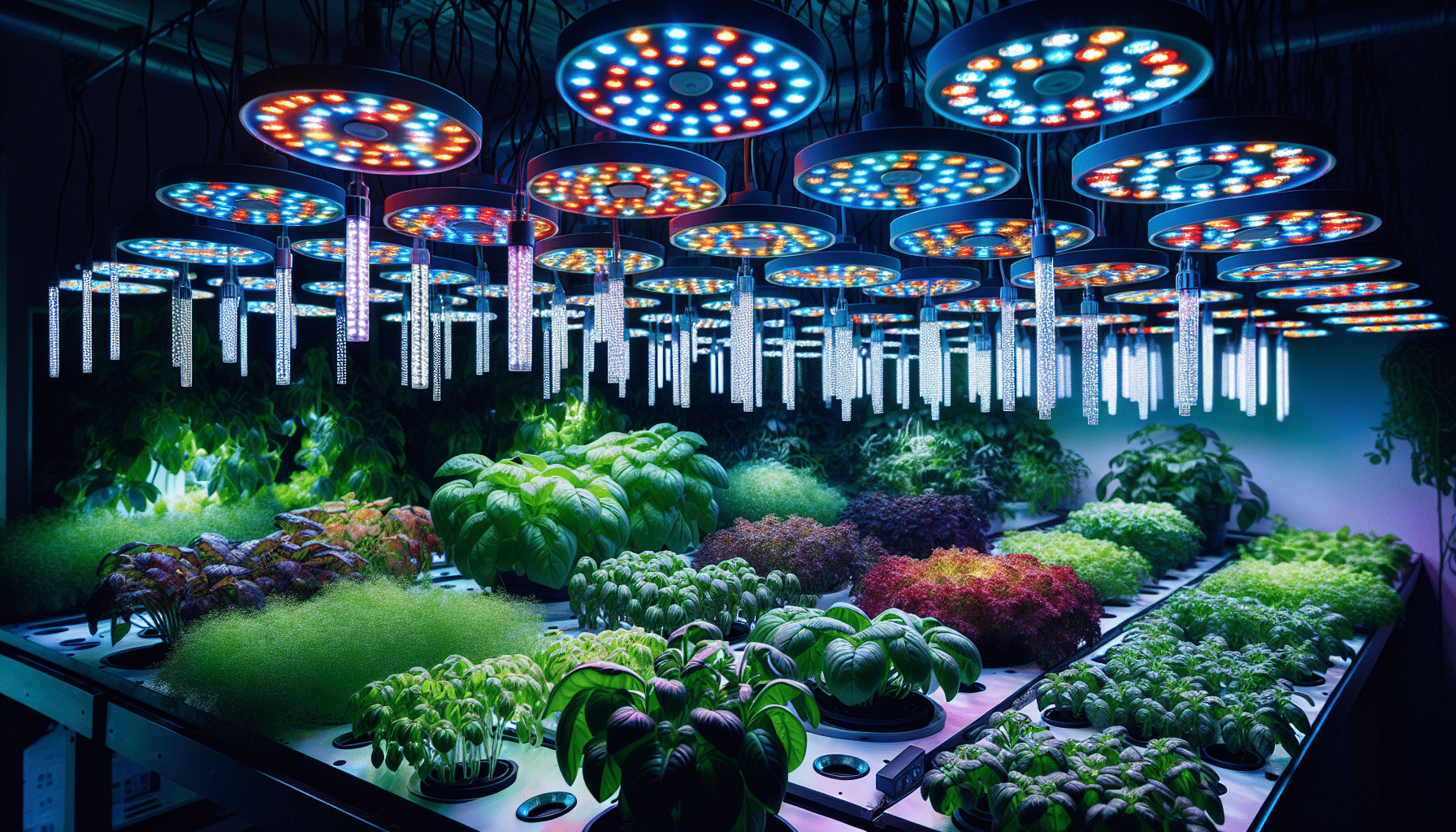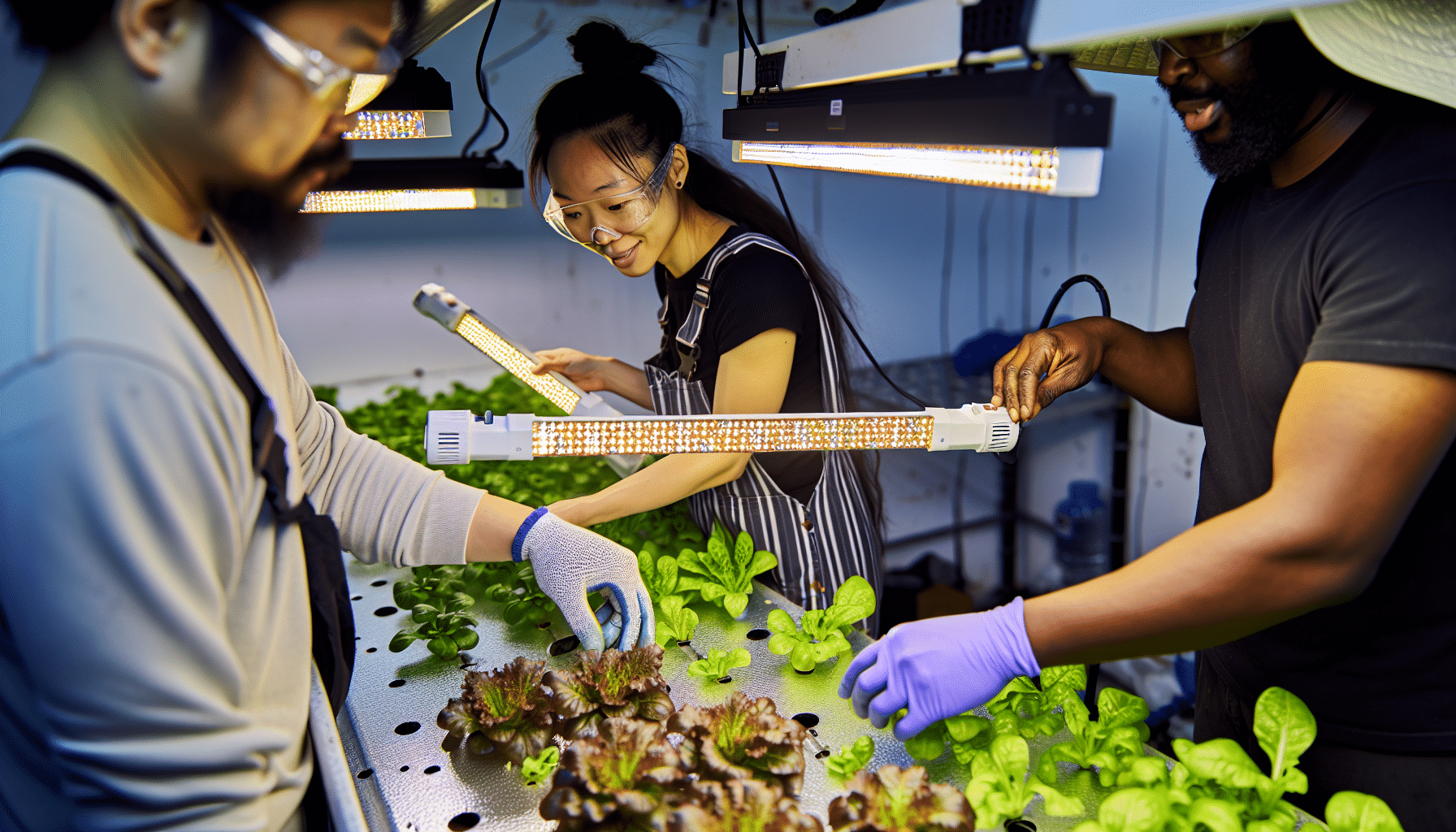Sitewide Sale: Use code Get5Nutra for 5% OFF all products. FREE shipping & 30-Days Hassle-Free ReturnsShop Now
Experience the joy of having an indoor garden all year round with a special hydroponic system, featuring LED grow lights. This revolutionary method allows you to produce fresh and delicious vegetables such as tomatoes or lettuce regardless of external weather conditions, making your home gardening dream come true!
Adequate lighting is critical for the growth and health of plants in indoor hydroponic systems, with proper lights being necessary to fulfill the plants’ photosynthetic needs, affect growth patterns, and supplement natural sunlight.
LED grow lights are preferred for their energy efficiency and longevity, offering adjustable wavelengths to match different growth stages and providing more light output per watt while producing less heat than other types of grow lights.
Successful indoor hydroponic gardening involves selecting the right system components, properly installing and positioning LED grow lights, and consistent maintenance including monitoring light cycles, intensity, and adjusting light height as plants grow.

Lighting has an integral role in the mesmerizing domain of indoor hydroponics. Creating a prospering garden with strong and healthy plants is directly proportional to proper lighting. To put it simply, lights are vital for successful hydroponic systems since they determine plant growth quality and healthiness.
If you begin to spot pale or yellow leaves along with stretched stems on your plants, then that means illumination isn’t enough, hence investing in reliable LED grow lamps such as Tower Garden Grow Lights will guarantee you have all the resources needed for having an effective indoor hydroponic garden setup.
Also Read:
For healthy plants to thrive, their growth depends heavily on light energy that can be derived from photosynthesis. Flowering plants use this process for to convert the energy into a chemical form, thus ensuring the sustainable development and survival of the plant itself. Due to its effectuality on both leafy greens and other vegetative species such as herbs or vegetables & fruits alike. Having an appropriate lighting system set up within your indoor hydroponic becomes paramount. It helps these plants produce enough essential resources needed by each one so they are able to reach optimal conditions during all stages of life cycle based upon natural systems like flowering or germination too!
Indoor hydroponic systems don’t always have the adequate natural sunlight, so artificial lighting is used to fill in this gap. This ensures ideal growth conditions for plants by replicating natural photoperiods. There are many types of grow lights available such as fluorescent lamps, LED bulbs and metal halide that provide blue light helpful during early stages of plant development but also conserve energy while minimizing heat emission too. Finding a correct balance between real and artificial sunshine may lead to healthy crops with abundant harvests from your hydroponics system set up indoors!

In order to make the best choice for LED grow lights in your indoor hydroponic system, careful consideration is paramount. This light can significantly improve productivity and health of plants by shortening cycle times while cutting energy costs at the same time as improving results across various crops. When compared with HID (high-intensity discharge) lamps, LEDs are more efficient and generate less heat, which allows them not needing a ballast – like other systems do – since they have adjustable wavelengths essential for proper plant development.
For a successful indoor hydroponic garden, it’s important to consider the power of your LED grow lights and make sure they provide adequate coverage. Every plant has different light intensity requirements for optimal growth, so accurately adjusting them with either PAR meters (measuring photosynthetically active radiation) or lux meters (measuring lumens per square meter) is paramount. Ensure that there isn’t too much space between plants and lights – this affects how strongly each plant receives the illumination required for proper development.
Led grow lights are an essential tool for successful indoor gardening due to their ability of producing the right light spectrum required at different growth stages. It is especially important in terms of blue and red lighting, with more blue needed during vegetation whereas plants need extra red when they’re flowering or fruiting. With modern technologies such as LED, it’s easy to adjust wavelength giving perfect illumination for optimal plant development. Even the Tower Garden has built-in full spectrums designed specifically to help both vegetative expansion and blossoming phases!
LED grow lights offer a substantial level of energy efficiency due to the semiconductor technology used that allows for more light output per watt consumed compared to HPS or fluorescent lamps. LED lighting has an impressive lifespan up to 50,000 hours and will last longer than traditional bulb types. Growers should consider additional lighting options when signs of intensity decrease over time. Replacing old bulbs could be a solution in this instance too. With such features as improved energy performance and longevity, it’s understandable why LED is becoming increasingly popular among growers seeking reliable illumination solutions within their cultivation operations.
To ensure the successful creation of an indoor hydroponic system with LED grow lights, several factors must be considered. Such components should not only provide adequate light intensity and spectrum for optimal growth, but also need to be correctly placed at a distance 6-12 inches above seedlings so that plants can benefit from appropriate lighting exposure. As they develop taller over time, adjustments in positioning may be necessary to guarantee continued satisfactory conditions are fulfilled throughout their life cycle.
It’s imperative to select the right components for a hydroponic system in order for it to thrive. This includes anything from the nutrient reservoirs and growing mediums, down to the channels of water that flow through them. Grow trays serve as spaces where plants can flourish while ensuring their roots get access to essential nutrients required for optimal growth. The Nutraponics Hydroponics Growing System boasts pumps that enable continuous circulation of both water and those very same vital nutrients around all parts of your hydroponic space. Thus helping with plant development along each step taken by every single grower on this journey towards greenery success!

When installing LED grow lights, one needs to decide on the appropriate size and type before setting up a timer for specific light cycles and suspending the lighting from either a ceiling or supporting structure. It is essential that during flowering stages, these LEDs are placed around 18-30 inches above the plants. At other times of growth, there are other times of growth. They should be no more than 12-19 inches away so as not to cause any damages while still providing an optimal level of illumination.
Maintaining an effective indoor hydroponic system is a vital step for the flourishing of plants. For instance, it includes regularly checking light cycles and adjusting their intensity, as well as keeping track that all components are in proper working order, like using timers to make sure lights switch on and off at designated times guaranteeing desired plant growth. Monitoring tools such as lux meters or PARs must be utilised repeatedly to ensure adequate lighting conditions which will support optimal development for your plants.
When it comes to indoor hydroponic systems, monitoring light cycles and intensity is key for effective plant growth. Speaking, plants in such a system need 18 hours of exposure to lighting with 6 hours being left dark each day.
Light plays an important role when talking about the development of leafy vegetables and other crops found in hydroponics settings. Too little can lead to tipburn while more than necessary could stunt progress so maintaining close track of illumination levels is crucial.
It is essential to regulate the height of your LED grow lights in relation to plants as they evolve. Doing so helps avoid burning or inadequate light penetration, and ensure proper illumination for the best results with a hydroponic system.
The optimal distance between plants and these types of lights will differ depending on plant stage growth. It usually rests within 12-30 inches away from them. Keeping this appropriate proximity allows for avoiding damages due to too much heat exposure while providing enough amount of light necessary.
No matter the time of year, you can grow fresh crops indoors with quality hydroponic systems that come outfitted with LED lighting. For instance, there are two highly-regarded options on offer – Nutraponics Pro Shelf Hydroponics Indoor Garden and Nutraponcis LED Hydroponic Systems.
Another great choice is the Nutraponics GrowTower with LED grow lights. It has all the necessary items in one package to facilitate plant growth inside your home, from seed pods to powerful LEDs for illumination purposes. Once every couple weeks or so just top up its water tank! There also exist herbs, lettuce and flower pod attachments allowing you more versatility in this indoor hydrophonic garden system setup.
The year-round production of hydroponic plants, harvested for their fresh produce, can be achieved with the proper setup and usage of LED grow lights. A correct installation and maintenance is paramount in order to ensure successful yields from your indoor garden. Understanding how important lighting really is also goes a long way. With these considerations taken into account, you are now able to reap the benefits that an internal system provides, all without having to wait through any seasonal change!
Grow lights with LED technology are perfect for indoor hydroponic gardening given their energy-saving capabilities and ability to be tuned into specific spectrums that optimise vegetative growth (blue) or flowering/fruiting stages (red).
For those with a small area or who aim to grow plants and produce throughout the year, hydroponics offers both space efficiency and accelerated growth. While this may come at an additional cost, it could ultimately mean faster harvesting of fresh produce without having to worry about seasonal limitations.
For those just starting out, I suggest the Active Aqua Root Spa. It is a single container setup that lets you focus all your attention on one plant—great for newcomers in this hobby!
This system can take care of larger and heavier plants with ease.
The indoor hydroponic system heavily relies on the right type of light to ensure that plants are growing healthy and strong. Without proper lighting, there is a risk of weaker or even sickly plants emerging from the environment. Thus it can be said that without sufficient illumination, your hydroponic system cannot truly flourish in producing successful results about healthy plant growth.
LED lights specifically designed for hydroponic systems are known to be energy-efficient, reliable and feature adjustable wavelengths which contribute significantly to the growth of plants with reduced cycle time, but still have great results. This also lowers energy costs while promoting optimal plant development.
Grow 100 planting sites, monitor ph levels, water temperature, water levels, and control light and water cycles.
© Copyright 2024 Nutraponics. All Rights Reserved.